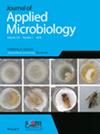幕后工作羊皮可持续脱毛过程中细菌群落的元基因组分析。
IF 3.2
3区 生物学
Q2 BIOTECHNOLOGY & APPLIED MICROBIOLOGY
引用次数: 0
摘要
目的皮革业正在采用环保技术,以符合法规要求并实现可持续增长。虽然酶法去毛是传统制革方法的绿色替代品,但其复杂性往往导致成本增加。为了解决这个问题,我们研究了在醋酸条件下对环境影响较小的羊皮本地细菌菌群的表现。方法和结果利用元基因组技术,我们分析了脱毛过程中细菌群落的动态。调查显示,与水处理相比,醋酸处理中的微生物多样性和丰富度明显增加。在类别水平上,我们观察到醋酸组中占主导地位的伽马蛋白菌在处理后有所减少,而放线菌数量则激增。相比之下,水处理组中的类杆菌则有所增加。目级分析表明,经醋酸处理的白酒中假单胞菌减少,放线菌增加,而黄杆菌在水处理的白酒中更为普遍。在科一级,醋酸组中的大戟科(Moraxellaceae)减少,微球菌科(Micrococcaceae)增加,与之形成鲜明对比的是,水处理组中的卫矛科(Weeksellaceae)明显增加。时间分析进一步凸显了不同处理条件下不断变化的细菌景观。此外,醋酸处理促进了微生物群落的稳定,有利于皮革的可持续加工。利用 PICRUSt2 预测了功能途径。研究结果表明,水组中明显富集的降解途径在醋酸组中较少,这有可能防止基质基体在去毛刺过程中受到破坏。通过加深我们对脱毛过程中微生物相互作用的了解,本研究为完善这些生态友好型技术开辟了途径。我们的研究结果倡导向更环保的脱毛方法转变,并为更广泛的可持续生产实践对话做出了贡献,强调了利用本地微生物群落获得环境和经济收益的重要性。本文章由计算机程序翻译,如有差异,请以英文原文为准。
Behind the Scenes: Metagenomic Analysis of Bacterial Communities in Sustainable Depilation of Sheepskin.
AIMS
The leather industry is embracing eco-friendly technologies for both regulatory compliance and sustainable growth. While enzymatic depilation provides a greener alternative to traditional beamhouse methods, its complexity often leads to higher costs. To address this, we examined the performance of sheepskins' native bacterial flora in acetic acid conditions with low environmental impact.
METHODS AND RESULTS
Utilizing metagenomic techniques, we analyzed the bacterial community dynamics during the depilation process. This investigation revealed a notable increase in microbial diversity and richness in acetic acid treatments compared to water treatments. At the class level, a post-processing decrease in Gammaproteobacteria dominance was observed, while Actinomycetia numbers surged in the acetic acid group. In contrast, the water group showed an increase in Bacteroidia. Order-level analysis indicated reductions in Pseudomonadales and increases in Actinomycetales with acetic acid treatment, whereas Flavobacteriales was more prevalent in water-treated liquors. At the family level, Moraxellaceae decreased and Micrococcaceae increased in the acetic acid group, in contrast to the marked rise of Weeksellaceae in the water group. Temporal analyses further highlighted the evolving bacterial landscapes under different treatments. Moreover, acetic acid treatment fostered a stable microbial community, beneficial for sustainable leather processing. Functional pathways were predicted using PICRUSt2. It showed that significantly enriched degradation pathways in the water group were less abundant in the acetic acid group, potentially preventing substrate matrix damage during depilation.
CONCLUSIONS
The study underscores the transformative potential of acetic acid for the leather industry, offering a pathway to reduce pollution while maintaining economic viability. By enhancing our understanding of microbial interactions during depilation, this study opens avenues for refining these eco-friendly techniques. Our findings advocate for a shift towards greener depilation methods and contribute to the broader dialogue on sustainable manufacturing practices, emphasizing the importance of leveraging indigenous microbial communities for environmental and economic gains.
求助全文
通过发布文献求助,成功后即可免费获取论文全文。
去求助
来源期刊

Journal of Applied Microbiology
生物-生物工程与应用微生物
CiteScore
7.30
自引率
2.50%
发文量
427
审稿时长
2.7 months
期刊介绍:
Journal of & Letters in Applied Microbiology are two of the flagship research journals of the Society for Applied Microbiology (SfAM). For more than 75 years they have been publishing top quality research and reviews in the broad field of applied microbiology. The journals are provided to all SfAM members as well as having a global online readership totalling more than 500,000 downloads per year in more than 200 countries. Submitting authors can expect fast decision and publication times, averaging 33 days to first decision and 34 days from acceptance to online publication. There are no page charges.
 求助内容:
求助内容: 应助结果提醒方式:
应助结果提醒方式:


